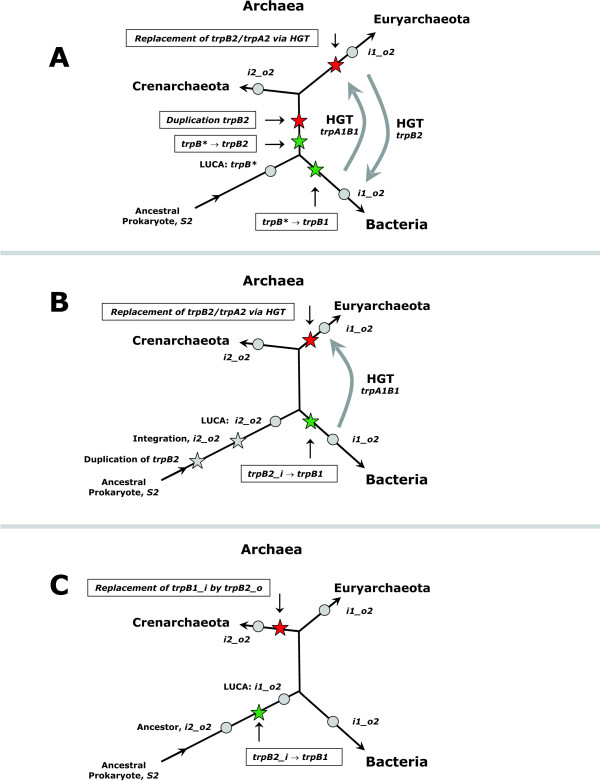Figure 9.

Alternative models of trpB evolution. Model A assumes that a single and intermediate trpB* gene existed in the last universal common ancestor (LUCA) of bacteria and archaea. The evolution of the trpB2 gene is considered an archeal and that of the trpB1 gene is considered a bacterial invention. The occurrence of trpA1 and trpB1 genes in archaea and of trpB2 genes in bacteria are explained by a twofold horizontal gene transfer (HGT). A duplication of trpB2 in an ancient archeal genome has been postulated to explain the existence of the non operon-based trpB2. Models B and C propose two alternatives for the evolution of the LUCA. Model B assumes that the evolution trpB2 → trpB1 occurred in an early bacterial species after the divergence of bacteria and archaea. The replacement of linkage group trpB2A2 by trpB1A1 via HGT was postulated to account for the euryarcheal predecessor of type i1_o2. Model C assumes that the evolution trpB2 → trpB1 occurred before the divergence of bacteria and archaea. Hence, the replacement of an operon-based trpB1 by a trpB2 gene and the evolution trpA1 → trpA2 was postulated for the crenarcheal ancestor. For acronyms of species-types, see legend of Table 2. Distances are arbitrary and do not represent evolutionary time intervals. Stars indicate events of genomic rearrangements, circles filled in grey represent ancient predecessors.
